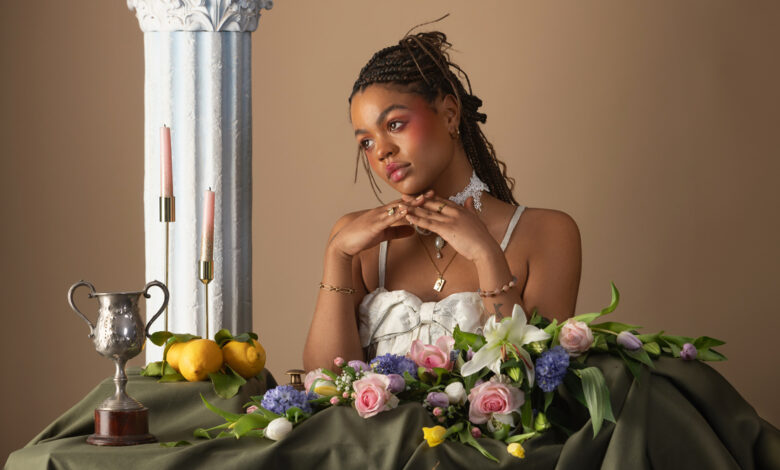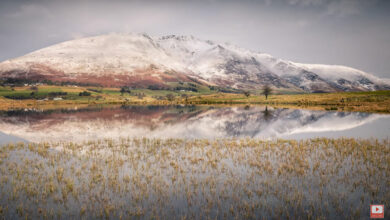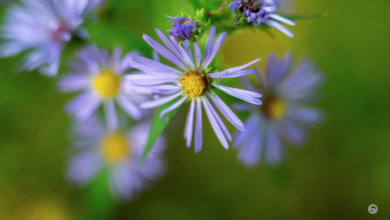The Problematic Concept of the ‘Muse’ in Portrait Photography

Have you ever described a portrait subject as your muse? Beneath the word’s glamorous exterior lies a complex and often problematic history surrounding the photographic muse. When we examine this age-old concept through a modern lens, it becomes clear that the term “muse” is often reductive, sexist, and objectifying. This article explores why the concept of the muse may be best left in the past.
The term “muse” has long been embedded in the lexicon of photography and broader artistic genres, denoting an individual who inspires an artist’s creativity. Traditionally, muses have been predominantly women, who, through their beauty, charisma, or other attributes, have sparked the imagination of predominantly male artists. While the idea of a muse may seem romantic, it is problematic and needs to be rethought through modern thought processes.
What does “Muse” mean?
The word “muse” originates from Greek mythology, where the muses were nine goddesses who presided over the arts and sciences. They were seen as sources of inspiration and desire for poets, musicians, and artists. Over time, the term evolved to describe a person, usually a woman, who provides artistic inspiration. In contemporary art and photography, a muse is often someone whose appearance, personality, or presence profoundly influences an artist’s work.

Negative experiences of being a Muse
This term is inherently problematic. It can reduce individuals to mere sources of inspiration, stripping them of their identity, their ability to act, and their contribution. Muses are rarely recognized as active collaborators; instead, they are often seen as passive, their primary function being to inspire.
The role and experience of a muse is not passive and can often involve complex interactions of power, control and sometimes exploitation. It is assumed that a photographer must be successful in order to have his or her own muse. Romantic views of the muse can obscure the detrimental effects this role can have on the individual.
Muses throughout history
Throughout the history of photography, many individuals have been immortalized as muses, often overshadowing their personal achievements and portraying them as mere inspirations for famous male artists.
Elizabeth Siddal
Perhaps one of the most famous muses of the Pre-Raphaelite Brotherhood, Siddal was a poet, artist, and the main model for the painter Dante Gabriel Rossetti. Despite her own artistic talent, she became Rossetti’s wife and model for a time, and is often remembered only as Rossetti’s muse and a tragic figure in his works. Siddal died of an opium overdose in the second year of their marriage after suffering from ill health and depression.

Lee Muller
Originally known as a muse to Man Ray, Miller was a talented photographer and war correspondent. Her significant contributions to art and journalism are often overshadowed by her relationship with Ray, and she is often discussed solely as an object of Ray’s affection, as seen in his work “The Lovers”.
Edie Sedgwick
Known as Andy Warhol’s muse, Sedgwick starred in many of Warhol’s films and became an icon of the 1960s counterculture. Her tragic life and early death are often romanticized, overlooking the exploitative nature of her relationship with Warhol. If you listen to the first sentence in the video below, it sums it up pretty succinctly.
The Power Imbalance in the Relationship Between the Muse and the Artist
At the core of the muse concept is an imbalance of power. The artist, often in a position of authority and creative control, often determines the narrative surrounding the muse. This dynamic can lead to the objectification and commodification of the muse, who is valued primarily for their ability to inspire rather than for their individual talents or contributions.
This imbalance is particularly evident in the historical context of women acting as muses for male artists. The muse is often seen as a supernatural, ethereal figure, devoid of personal agency, existing solely to stimulate the male artist’s creativity. This dynamic reinforces traditional gender roles and perpetuates patriarchal views of women’s value in the world of art and photography.
I regularly photograph my daughter, a talented musician, and our photoshoots are far from a traditional artist-muse relationship. That label would fail to capture the depth of our collaborative relationship and the autonomy she holds. Our photoshoots involve a mutual exchange of ideas, with both of us contributing equally. Sometimes I send my daughter an image or a painting or start with some images I’ve come up with based on her song lyrics. Sometimes she’ll be the one to send in inspirational content, which could be any of the above, or even an image of an outfit she wants to wear, and I’ll build an idea around that.
She suggests poses and subjects that reflect her artistic identity and is certainly not afraid to express her preferences when she doesn’t like an idea or when she’s tired and nearing the end of a shoot. This collaboration allows her to express herself visually and helps me explore my creative boundaries. It’s a complementary experience, while also expanding our family archive, which is a little more complete than most.
The term muse makes me uncomfortable for a number of reasons that I have discussed throughout this article. I cringe when I see images of women in lingerie (or less) in suggestive poses with captions that read something like “my latest muse.” Using this term perpetuates a reductive and objectifying view of women, reducing them to mere objects of attraction rather than acknowledging their full humanity and capacity for action. This highlights the problematic aspects of the traditional muse concept, which often ignores the creativity and individuality of the person being photographed.

As a woman, my personal experiences have shaped how I approach people in front of the camera. They come to the shoot with a clear idea of what we are going to achieve that day. I discuss what I am doing, I let them know what part of their body is in the frame so they know when I am switching from a half-length to a close-up, etc. This not only helps to create better poses but also creates a more trusting environment. For example, if I get down low, I can explain the perspective of power dynamics and how women are traditionally photographed from a slightly higher perspective to make them appear smaller or more submissive, and men are traditionally photographed from a slightly lower perspective to make them appear taller and more important. I try to photograph most people from a lower perspective for at least a small part of the shoot, whether it is an adult or a child. Everyone should feel like they are metaphorically in a higher position.

The Modern Muse: Redefining Inspiration in Contemporary Art
While I personally think the word muse should be phased out, the concept of the muse has evolved significantly from its historical origins, and the photographic subject is no longer accepted as a static figure of inspiration. The modern muse takes on a more active and collaborative role in the creative process. This shift reflects broader societal shifts towards gender equality, recognition of diverse voices, and permission and agency in the artistic process. The updated collaborative nature of the relationship between photographer and subject will empower the model to take ownership of their appearance and expression, rather than being a passive subject. Ideas can be contributed and at least consulted in advance with the opportunity to reject or adjust to their comfort level. Whether they are artists, thinkers, activists, or ordinary individuals, their qualities and achievements are recognized and celebrated. A sense of who they are can be more evident in the image, rather than just their appearance.
Final Thoughts
The term muse in photography and art, while historically significant, carries problematic connotations of objectification, power imbalance, sexism, and lack of agency. The negative experiences of many muses underscore the need to reassess the concept and consign it to the history books. Instead, by embracing collaboration, diversity, and mutual respect, photographers can enhance their creativity and provide greater authenticity, resulting in richer and more powerful images.
My perspective is shaped as a female photographer, which naturally informs my analysis. It was great to hear from both male and female photographers to expand the discussion.
Leading Image ©Kim Simpson 2023




